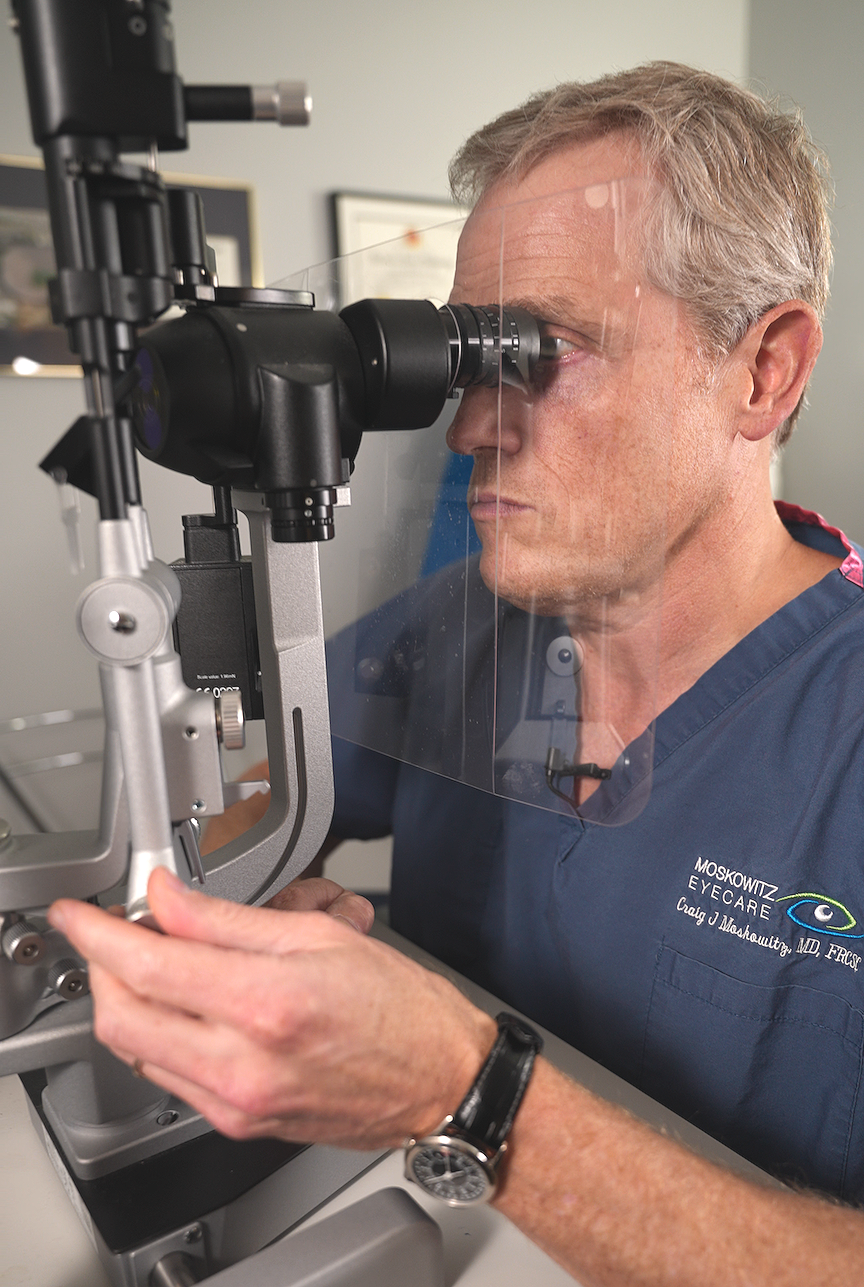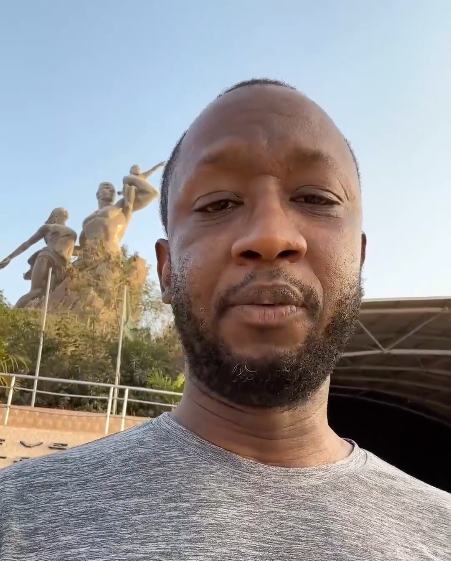
Advanced Surface Ablation
The Modern, Safe Alternative to LASIK in NYC
ASA Laser Eye Surgery is the safest and most precise vision correction procedure available in New York City.
Advanced Surface Ablation treats the cornea in the gentlest and least invasive way possible. Without cutting. Without a flap. That’s why, in terms of long-term complications, ASA is 10x safer than LASIK.
ASA eye surgery eliminates the need to cut a flap by working directly on the surface of your eye using excimer lasers that precisely alter the shape of your cornea.
Unlike LASIK, ASA also doesn’t require a suction device to increase the pressure on your eye during the procedure.
| Feature | LASIK | ASA (Advanced Surface Ablation) |
|---|---|---|
| Corneal Flap | ❌ Yes (flap created) | ✅ No flap |
| Cutting | ❌ Yes (microkeratome or femtosecond laser) | ✅ None (non-invasive surface reshaping) |
| Risk of Dry Eye | ❌ Higher | ✅ Lower |
| Recovery Time | ⏱️ Faster initial recovery | ⏱️ Slightly longer initial recovery |
| Long-Term Stability | ❌ Risk of flap dislocation or regression | ✅ No flap-related issues; more stable |
What about the difference between ASA and PRK Surgery?
Using newer technology and methods, Advanced Surface Ablation (ASA) is a more modern and refined version of Photorefractive Keratectomy (PRK) that results in less haze, scarring, post-op pain and a quicker recovery.
ASA shares a lot in common with PRK, but there are meaningful distinctions.
We use a soft brush to treat the top-most layer of your eye (the epithelium) – not a blade – and we don’t use alcohol. This approach is significantly gentler than traditional PRK and only removes 50 microns of tissue, substantially reducing discomfort and the likelihood of any side effects down the road.
Tired of glasses or contact lenses?
Dr. Moskowitz performs ASA in New York City. Schedule a free consultation at his office by clicking the button below!
To recap: the key distinction between LASIK Surgery and ASA Surgery is that LASIK cuts and lifts part of the cornea – a “flap” of tissue – and ASA does not.
With ASA, the surgeon loosens the outer layer of the cornea (the epithelium) to allow the laser to reshape the deeper corneal tissue layers. With LASIK, the cornea flap is cut and lifted to perform the laser; once the laser is performed, the flap is replaced.
The main issue with this technique is that after the flap is cut, your cornea remains in two parts instead of one. The two parts never fuse completely, resulting in myriad long-term vision problems (the two most common relate to night vision and chronic dry eyes, but some are more serious).
Looking for more details comparing ASA, LASIK, and PRK? Check out this guide.
Want to know what ASA costs at Moskowitz Eye Care? Here’s our transparent pricing information.
Interested in making an appointment to see if you’re a good candidate? Click here.
Who is ASA Eye Surgery for?
If you’re currently considering LASIK or PRK for moderate-to-severe myopia (nearsightedness), hyperopia (farsightedness), or astigmatism, you’re likely a candidate for ASA and I’d love to sit down and discuss the benefits of the procedure.
Are you a candidate?
-
You’re between 18 and 50 years old.
-
In general, these are the prescription limits I accept for ASA surgery at Moskowitz Eye Care:
Nearsightedness: up to -8.00 diopters
Farsightedness: up to +3.00 diopters
Astigmatism: up to 6 diopters
Additionally, to have ASA surgery, your eye prescription needs to have changed no more than .5 Diopters for at least 12 months. A consistent prescription means your refractive errors are stable, and you’ll have good long-term results.
-
If your eyes are in good health and you don’t have a condition like Keratoconus or a cataract, you’re likely a candidate for laser eye surgery. If testing shows that your cornea has enough healthy tissue and is regular and symmetrical in steepness and shape, ASA remains on the table.
-
We are contacted by many people who have previously had LASIK Surgery who would like to know if ASA can correct issues from their initial procedure.
Unfortunately, this is highly unlikely in most cases.
-
You don’t have other high-risk health factors
You don’t have auto-immune disease
You’re not pregnant or planning to become pregnant in the next six months
Advanced Surface Ablation 101
ASA with Dr. Moskowitz is >10x safer than LASIK and less likely to result in future complications because it eliminates cutting and the flap!
ASA is a more advanced version of PRK that uses the newest, safest tech in the industry. Because of this, patients can expect less post-op discomfort and a quicker recovery than PRK.
I often meet with patients who have visited LASIK centers where they were told that they were not good candidates for laser vision correction. The most common reason for this is that their corneas were too thin to withstand a procedure like LASIK in which a flap is cut.
The higher prescription a patient has, the more corneal tissue is necessary for the correction. Hence, many patients with higher prescriptions who are turned away from LASIK are obvious candidates for ASA.
In-person consultations at our New York City office are completely free and casual. For more information to help determine if you’re a good candidate for ASA, read more here or use the form below to contact us!
⏿
10x Safer
⏿
No Cutting
⏿
No Flap
⏿ 10x Safer ⏿ No Cutting ⏿ No Flap
Schedule a Free Consultation
Free in-person consultations with Dr. Moskowitz are held at our New York City office on the Upper East Side.
More About Why ASA is “A Safer Alternative”
By not cutting the flap, ASA surgery preserves 100-150 microns of cornea tissue. That’s enough to treat another 10 diopters of prescription.
An evaluation of the corneal thickness explains why a patient’s cornea is usually too thin for higher prescriptions to receive LASIK. The average cornea is 550 microns thick. After laser vision correction, a patient should be left with 300 microns untouched, leaving the surgeon 250 (550-300 = 250) to work with.
When a flap is cut, either with a blade or with a laser like Intralase, that flap usually eliminates up to 100-150 microns of the working 250 microns. Therefore, with LASIK, instead of having the 250 microns to work with like you would if you had not cut the flap, you are left with only 100-150. Having only 100-150 microns left to work with prohibits patients with higher prescriptions from receiving this procedure.
The Two Biggest Issues with LASIK
Cutting the flap permanently cuts the nerves of your eye (the nerves that tell you when to blink). After LASIK, a patient has much fewer nerves and therefore a much lower blink rate. Before LASIK, a patient typically blinks every 5-10 seconds. After the procedure, the blink rate drops to every 10-15 seconds. In ASA, by not cutting, there is no change in the blink rate and therefore less dry eyes. In many cases the dry eyes improves because the patient is no longer wearing a plastic contact lens on their eye!
The other most common LASIK complaint concerns night vision. This happens because the cornea is in two parts instead of the one it’s supposed to be. Where the two severed parts come together, there is a “sandwich” configuration. When light rays enter the eye, they encounter this interface and scatter, resulting in glare and halo effects which patients are more aware of at night.
These are among the reasons why the U.S. federal government for decades banned LASIK for pilots and other officers, insisting on no-cut refractive surgery.






